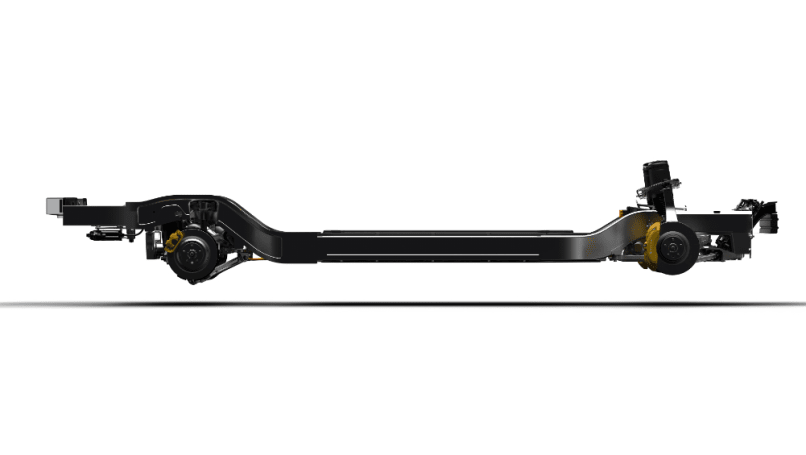
How do electric cars work?

Full electric vehicles (EVs) work by using an electric motor powered by a rechargeable battery pack, rather than using a traditional petrol-powered internal-combustion engine (ICE).
News revolving around the automotive industry seems to be abuzz of late with mentions of electric vehicles or the latest innovations from Tesla, and for good reason: electric-vehicle technology is becoming more advanced and affordable, leading to the increasing worldwide popularity of EVs.
To give some perspective: about 17,000 EVs were on the road in 2010, increasing exponentially to 26 million in 2022 - 70 per cent of which are full battery electrics as opposed to plug-in hybrids, according to the International Energy Agency.
Although it’s likely you’ve already heard about the age of EVs being ushered in, a lot of people still don’t know a whole lot about electric-vehicle technology or how electric cars work.
Charging up

The first thing your EV is going to need before it gets working is - surprise, surprise - electricity.


Download the EVGuide Report, 2022
Australia's one-stop snapshot of all things relating to electric cars.
The rechargeable batteries you find inside EVs come in a few different flavours, meaning the ways in which they can be charged and how much current they can handle varies between types.
In basic terms, to charge the battery you connect your EV to an external charging point - either slow, Level 1 AC trickle charging like you’ll find from a wall socket, medium Level 2 AC fast charging that you’ll get from a plug-in wall box charger, or fast Level 3 DC rapid charging, which is the kind you’ll find when using a public DC rapid charger.
Read more about electric cars
EV batteries can only store DC electricity, and ad electricity you take off the grid is AC - meaning the EV has to convert the electricity from AC to DC (not applicable, of course, if you’re using a DC charger, where the electricity has already been converted).
If your EV has an AC induction motor, the battery will convert its stored DC electricity to AC to power the electric motor.
Battery packs

All of that electricity has to be stored somewhere, and in the case of a typical EV it’s not a single battery, but a ‘battery pack’ usually stored in the floor of the car and made up of thousands of small battery cells (the Tesla Model S, for example, has over 7000 lithium-ion battery cells in its battery pack).
Although there are numerous types of EV batteries - with newer, more efficient ones constantly being researched and developed - the most common kind you’ll find in an EV is a rechargeable lithium-ion battery.
Lithium-ion batteries have become the norm due to the fact that they have high energy efficiency, good high-temperature performance and a high power-to-weight ratio, meaning they hold a lot of energy for their weight, and less weight in an EV means it can travel further on a single charge.
How far an EV can travel on a single charge is referred to as ‘range’, and you’ll get bigger range the bigger the battery pack, as this determines its storage capacity, which is measured in kilowatt-hours (kWh).
Generally, the bigger the kWh the more range, but other factors do come into play, like aerodynamics, motor efficiency, and how much power other components use.
The EV’s electric motor

If you were to view an electric car diagram that revealed the vehicle’s innards, you would see that it is vastly different to that of a car that runs on a traditional internal-combustion engine.
The battery pack provided power to an electric motor, and currently EVs have two main types of electric motors - an Alternating Current (AC) induction motor and a permanent-magnet Direct Current (DC) motor, although there are several variations of these.
You’ll find a company like EV giant Telsa uses both: its Model S has an AC induction motor, while the Model 3 uses a permanent-magnet DC motor.
The main difference between the two is that permanent-magnet DC motors are generally more efficient at full load (the largest current that a motor is designed to carry), and they’re often smaller and lighter, helping to reduce the overall weight of the car.
The drivetrain of an EV is, of course, radically different to that of an ICE vehicle, and boasts, usually, a single-speed transmission, which sends power from the motor to the wheels.
The lack of an ICE, a multi-speed transmission and other components means there are far fewer moving parts in an EV - around 60 per cent less - which is one of the reasons they drive without making a sound and require very little in the way of maintenance.
The lack of gears (aside from Porsche's Taycan, which has two) also means an electric car engine can accelerate very quickly - Tesla’s Model S Plaid is able to get from zero to 100 km/h in a claimed 2.1 seconds, and can hit a top speed of 322km/h.
So while there’s less going on inside an EV, in terms of how it works, there’s nothing lacking in terms of power - or speed.










Comments